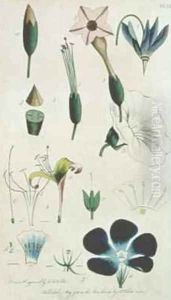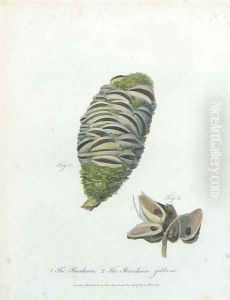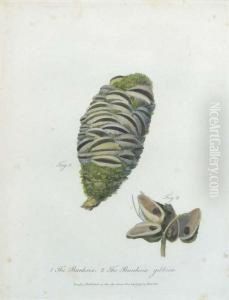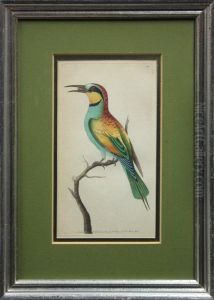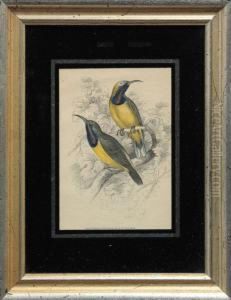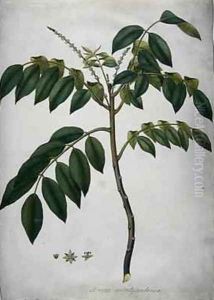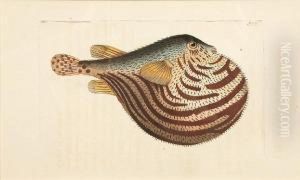Frederick P. Nodder Paintings
Frederick Polydore Nodder was an English natural history artist and engraver who flourished in the late 18th century, with his most active period from around 1770 until his death in 1800. Not much is known about his early life or training. He is best remembered for his work on George Shaw's 'The Naturalist's Miscellany' or 'Vivarium Naturae', which was a multi-volume collection of hand-colored prints of animals, birds, insects, and plants, published between 1789 and 1813.
Nodder was skilled in both painting and engraving, and he translated Shaw's scientific descriptions into vivid illustrations. His illustrations were characterized by their accuracy and attention to detail, which was of paramount importance for scientific works of that era. Nodder's work played a significant role in the dissemination of scientific knowledge about various species, many of which were being described for the first time to European audiences.
In addition to his work on 'The Naturalist's Miscellany', Nodder also contributed illustrations to other scientific publications of the time. He succeeded his father Richard Nodder as an artist to George III. Frederick Polydore Nodder's contributions to natural history illustration helped lay the groundwork for future naturalists and artists.
After Nodder's death in 1800, his wife Elizabeth continued to color the plates for 'The Naturalist's Miscellany' until the work was completed in 1813. Despite his contributions, Frederick Polydore Nodder remains a somewhat obscure figure in art history, with limited biographical information available. His legacy persists through the continued appreciation of his detailed and scientifically valuable illustrations.
